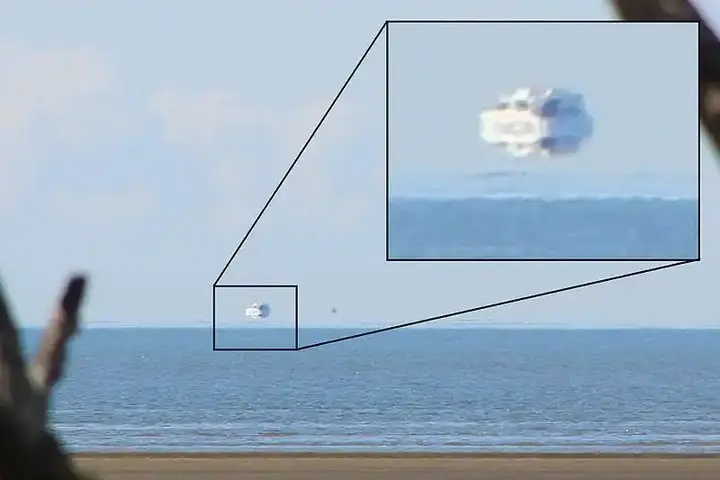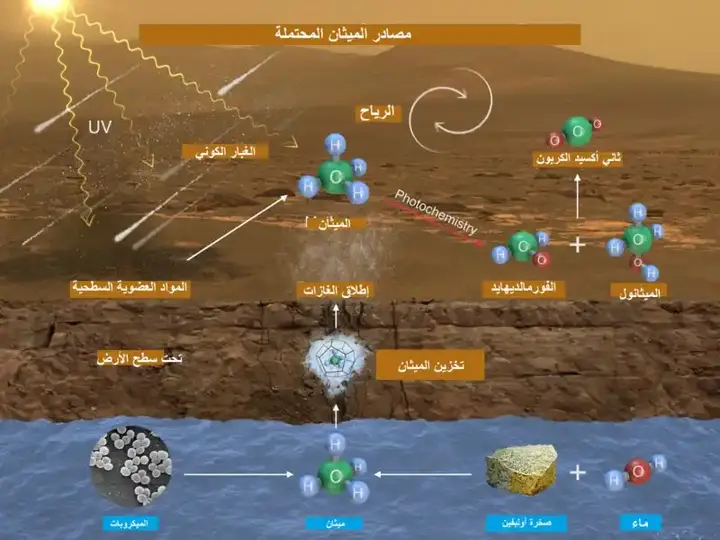"Abu Fanous" the jinn of the Saudi desert
Is it actually a jinn? Is it just a photophenomenon? Many people and scientists are confused in explaining this phenomenon or this strange being, which is the "Abu Fanous" of the Saudi desert jinn. Many people even say that the Prophet (peace and blessings of Allaah be upon him) spoke of him as "ogres" or "ghouls". Here we will learn about this strange object or phenomenon and delve into its origins and what it is.
Show key points
- Abu Fanous is a mysterious desert light phenomenon in Saudi Arabia, often described as resembling approaching or retreating car headlights that vanish suddenly.
- Local folklore links Abu Fanous to jinn or supernatural entities, believed to mislead travelers and sometimes cause them to disappear in the desert.
- The phenomenon has been associated with similar mysterious lights reported in other parts of the world, such as the Marfa Lights in Texas and Maine Maine Lights in Australia.
- ADVERTISEMENT
- One scientific explanation suggests that Abu Fanous could be clusters of dusty plasma generated by underground lightning or tectonic stress discharges.
- Another theory proposes that the lights are optical illusions caused by a supermirage, where light from distant car headlights is refracted by layers of air with different temperatures.
- Some researchers believe the lights might be caused by the combustion of natural gases like phosphine and methane, which are present in regions rich in hydrocarbons.
- Certain Islamic traditions and hadiths mention beings referred to as "ghouls" or "ogres," which some interpret as early references to phenomena like Abu Fanous.
Who is "Abu Fanous"
Abu Fanous, also called Abu Nuwayra and Abu Siraj, is obviously connected to light in one way or another... It's really a glare that looks like car lights at night, or like a ball of light if you're looking at it from a distance. It is said that in the early hours of dawn before sunrise, it appears moving away and sometimes approaching, and disappears suddenly.
Recommend
It is frequently seen in the Empty Quarter, the largest sandy desert in the world and considered part of the Arabian Desert. Nearby residents say Abu Fanous's goal is to mislead travelers from their path, and that whoever approaches him does not return, as travelers follow him until they get stuck in quicksand.
Other theories about what a "lantern" is

Abu Fanous is also known as "Marfa Lights" or "Maine Maine Lights" and this is after the places where this moving light was found, Marfa in the US state of Texas and Maine Maine in Australia. Scientists and people tried to explain this phenomenon in the following theories:
• Thunderstorms underground
James Bunnell, a former NASA engineer, worked in 2000 on the study of "Marfa lights," distributing surveillance cameras from different angles so that he could distinguish between car lights and lights that might be thought to be Marfa and actual "Marfa lights." Bunnell concluded that underground lightning strikes create dusty plasma clusters that are the energy source for these lights. Thus, "Marfa lights" are the result of a tectonic stress discharge around the city or the result of underground lightning.
• The phenomenon of supermirage or vata morgana: car headlights
The University of Texas sent some physics students to investigate "Marfa Lights" in 2004. The students explained that the lights were strongly associated with the appearance of the headlights on the highway and repeated with them, this is known as the magnifying effect of the supermirage.
This phenomenon occurs when there is a reflection in temperature, meaning that the air below the line of sight is colder than the air above it and objects, including lights, appear higher than their actual position. Thus, it has been suggested that the "Marfa Lights" are a mirage, because with Texas air being heated unevenly by the ground, it refracts light rays and scatters slightly so that the light from cars seems floating and tilted, like a fantasy.
• Incandescent gases
These lights, no matter where they appear, may be the product of the leakage of fosine and methane swamp gases. These gases may ignite at a certain temperature and pressure when in contact with oxygen, a phenomenon known as marsh glare. We see this phenomenon all over the world in particular and in Saudi Arabia in particular because of its large reserves of oil, natural gas and hydrocarbons, including methane.
Mentioning "Abu Fanous" in the hadiths of the Prophet

Some say that "Abu Fanous" was mentioned under the name "ghoul" or "ogres", as these words were used to refer to types of jinn and demons who are colored and formed in many forms, most notably a light of light. They were mentioned in two hadiths:
Jabir ibn Abdullah reported: The Messenger of Allah (peace and blessings of Allaah be upon him) said: "If you walk in the fertile, then enable the passengers to have its teeth, and do not bypass the houses, and if you walk in attraction, then beg for it, and you have to go to the daluj, the earth is folded at night, and when the ogres wandered for you, so take the initiative to call to prayer, and you and pray on the horse of the road, and descend on it, for it is the shelter of serpents, and the seventh, and the elimination of the need, for it is cursed."
It is proven from the Prophet (peace and blessings of Allaah be upon him) that he said: "There is no infection, no tira, no important, no zero, no petrel, no ghoul, and I like the omen."
In the first hadith, the Prophet commanded people to call for prayer and remember Allah when confronting ghouls (jinn). In the other hadith, he does not deny the existence of the jinn, but rather the Arabs' claim of the ability of ghouls to mislead people and push them to get lost in the desert and harm them.








